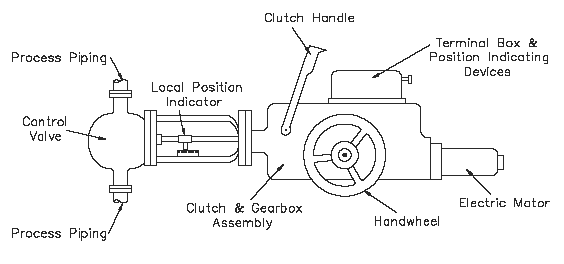Electric Motor Actuator Operation Review
Hydraulic and Pneumatic Knowledge
Electric Motor Actuator Operation Review
Electric motor actuators vary widely in their design and applications. Some electric motor actuators are designed to operate in only two positions (fully open or fully closed). Other electric motors can be positioned between the two positions. A typical electric motor actuator is shown below. Its major parts include an electric motor, clutch and gear box assembly, manual hand wheel, and stem connected to a valve.
The motor moves the stem through the gear assembly. The motor reverses its rotation to either open or close the valve. The clutch and clutch lever disconnects the electric motor from the gear assembly and allows the valve to be operated manually with the handwheel.
Most electric motor actuators are equipped with limit switches, torque limiters, or both. Limit switches de-energize the electric motor when the valve has reached a specific position. Torque
limiters de-energize the electric motor when the amount of turning force has reached a specified value. The turning force normally is greatest when the valve reaches the fully open or fully closed position. This feature can also prevent damage to the actuator or valve if the valve binds in an intermediate position.
